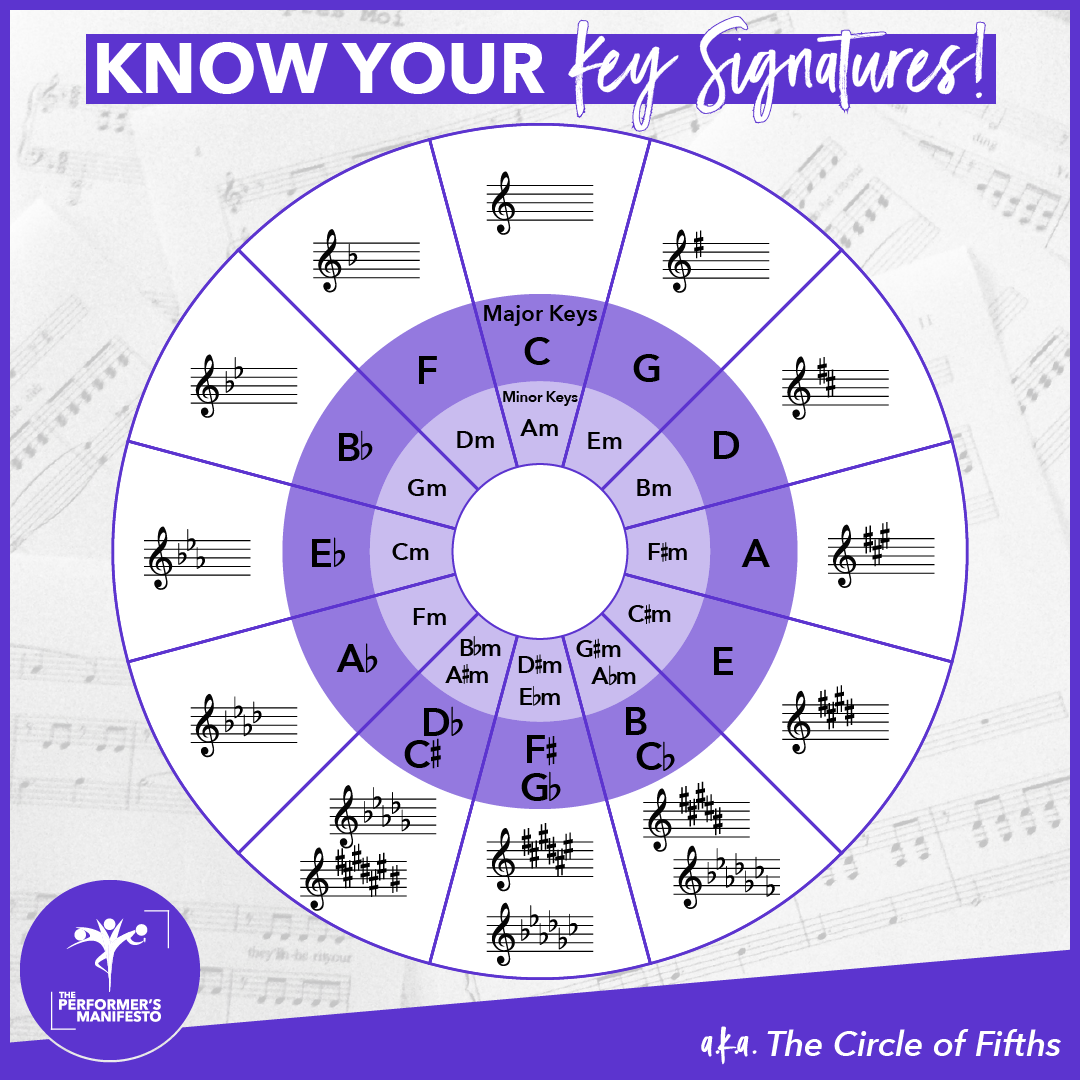For many performing artists, our voices are our primary instruments. But imagine the advantage we’d gain if we could effortlessly navigate the world of sheet music. While we’re the main attraction under the spotlight, understanding key signatures — particularly discerning the key of a song or pinpointing the perfect key for our distinct voice — can be a game-changer.
Cue: The Circle of Fifths!
What Exactly is The Circle of Fifths?
Picture this diagram as a performer’s trusted ally. It’s a brilliant cheat sheet that lets you swiftly identify a song’s key just by glancing at its key signature. The Circle of Fifths maps out the relationship between major and minor keys, showing their respective key signatures. As you move around the circle, each neighbouring key introduces one additional sharp or flat.
Why is it a Must-know?
Have you ever been in an audition or rehearsal and stumbled upon phrases like “Let’s notch it up a fifth” or “We’re switching to G major”? With the Circle of Fifths in your toolkit, you stand to dazzle not just with your voice, but also your musical insight! After all, it aligns with our pursuit of ceaseless growth and refinement, doesn’t it?
Navigating The Circle of Fifths:
In a quick look, you can:
- Identify major and minor keys based on the count of sharps or flats.
- Determine which keys have a close kinship.
- Pinpoint the dominant and subdominant chords for any specific key.
Equipped with this understanding, you can play around with transposing songs to keys that amplify your vocal qualities, giving you a distinct edge during performances.
So, while singing might be your primary passion, a foundational understanding of music theory concepts, such as the dominant and subdominant keys, can prove invaluable. The Circle of Fifths isn’t just for instrumentalists; vocalists can leverage it to make informed choices regarding song keys, harmonies, and more. Such expertise equips you to excel in collaborations and command performances. Cheers to endless discovery, learning, and owning every performance on stage!


